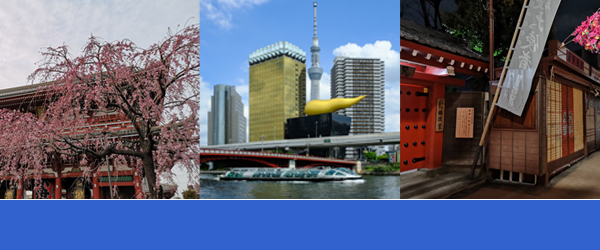Greetings, adventurous souls and curious travelers! Prepare to delve into the shadowy alleys and rooftops of Tokyo’s Asakusa district, where history intertwines with legend, and where the legacy of the notorious Goemon and his band of misfit thieves comes to life. Buckle up for a journey beyond the tourist brochures and into the clandestine world of the Five Goemon Statues – an enigmatic treasure hunt that will leave you chuckling, pondering, and craving more.
Forget the predictable tourist trail; Asakusa’s charm is so much more than Senso-ji Temple and Nakamise Street. Enter the hidden world of the Five Goemon Statues, scattered throughout the district like breadcrumbs from a heist. These statues aren’t your average selfie spots; they’re a whimsical ode to the legendary master thief Goemon and his cohorts, who had a penchant for pilferin
So, who were these mischievous rogues behind the statues? Allow me to introduce you to the stars of our show:
The Daring Heists: One statue captures him crouched on a rooftop, eyeing the city below as if calculating his next move. These statues immortalize their audacity, reminding us that sometimes, rules are meant to be broken, and purses, too.
The Art of Disguise: A mischievous wink from a rooftop ledge and a grin from behind a corner – these statues bring to life the cunning disguises that allowed these rogues to outwit their pursuers. Each disguise tells a tale of how these thieves could effortlessly blend into their surroundings, leaving authorities baffled.
Asakusa’s hidden gems celebrate these clever criminals, immortalizing their audacity and dexterity in statues. Imagine stumbling upon these scenes, where history and legend merge in a silent ballet of mischief and daring. Feel the pulse of history as you trace the steps of these thieves through the maze-like alleys, their legends echoing through time.
So, dear adventurers, when you find yourself in Asakusa, cast aside the well-trodden path and embrace the challenge of uncovering the Five Goemon Statues. Let your inner detective roam freely as you decipher the whimsical mysteries woven into the very fabric of this district. Remember, history doesn’t always play by the rules, and sometimes, the most exhilarating tales are found where the guidebooks dare not tread.
Now, armed with this knowledge, you’re ready to embark on your unconventional journey through the winding streets of Asakusa. Happy hunting, and may your exploration be as thrilling as the tales of the legendary Goemon himself!
You can see the statues HERE
Who was Goemon?
In the labyrinthine streets and alleyways of Tokyo’s ancient Asakusa district, stories of bravery, struggle, and camaraderie were woven in times of hardship. Amidst the shadows and splendors of urban life emerged a group of men who would go down in history as the “Five Thieves of Asakusa.” Their story is intertwined with the plight of the underprivileged in early 20th century Japan—a time of transition and societal transformation.
During the Taishō era (1912-1926), Japan underwent a paradigm shift as it moved away from feudal traditions and embraced modernity. In this context, Asakusa, a district known for its vibrant theater, entertainment, and nightlife, witnessed the formation of a band of marginalized youth who chose an outlaw’s path to survive and fight against the injustices of their time.
The lider was Ishikawa Goemon, and the others came from different backgrounds but shared a common struggle for survival in a world that seemed to offer them little opportunity. United by adversity, they forged a strong brotherly bond and decided to challenge the system that had marginalized them.
The gang adopted a “robbing from the rich to give to the poor” stance. They stole from the wealthy to distribute their loot among the less fortunate in their community, earning the support and affection of those who also found themselves on society’s fringe.
Despite their noble intentions, the acts of the Five Thieves of Asakusa did not go unnoticed by the authorities. The struggle between the marginalized and the justice system escalated. As the group became more widely known, tensions heightened, and their story took a tragic turn. They faced persecution, arrests, and ultimately, some members lost their lives in the process.
The tale of the Five Thieves of Asakusa resonates as a testament to the struggle against adversity and the pursuit of justice in a time of social and economic change. While their methods may have been questionable, their determination and solidarity reflected a response to the inequality and oppression prevailing in their era.
Over the years, the story of the Five Thieves of Asakusa has left an imprint on Japanese popular culture, inspiring literary works, plays, films, and other forms of artistic expression. Their story, with all its nuances and contradictions, remains a reminder that the fight for justice and equality can take diverse forms and can emerge even in the most unexpected corners of society.








